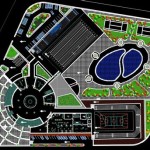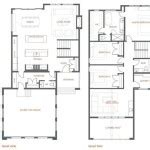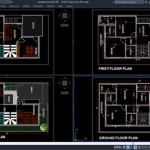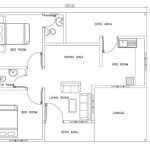Houseboat Plans: Navigating the Design and Build Process
Houseboat living offers a unique blend of freedom and tranquility. Whether envisioning a peaceful retirement on a calm lake or an adventurous nomadic lifestyle on a river, careful planning is crucial. The first step in realizing this dream is selecting the right houseboat plan.
A well-designed houseboat plan provides the blueprint for a comfortable and functional living space on the water. It details the dimensions, layout, and structural elements, ensuring the vessel is safe, stable, and meets specific needs and preferences. Several factors influence the choice of a suitable plan, including budget, desired size, intended use, and navigational area.
Budget considerations play a significant role in plan selection. Construction costs, materials, and labor can vary significantly. Defining a realistic budget upfront helps narrow down options and prevents overspending during the building process. Choosing a smaller, simpler design or opting for readily available materials can help manage costs effectively.
Size requirements depend on the intended use and the number of occupants. A small, cozy design might suffice for a couple seeking weekend getaways. Families or those planning extended stays require more space for bedrooms, bathrooms, and living areas. The size of the houseboat also impacts its maneuverability and mooring options.
Intended use significantly influences the design layout and features. A houseboat primarily used for fishing requires ample storage for equipment and perhaps a cleaning station. A liveaboard houseboat needs comfortable living quarters, including a galley, sleeping areas, and bathroom facilities. Entertaining requires a spacious deck and open-plan living areas.
Navigational area considerations impact the hull design and propulsion system. Navigating large, open bodies of water requires a robust and stable hull design capable of handling rougher conditions. River navigation necessitates a shallower draft and maneuverability in tighter spaces. Local regulations regarding wastewater disposal and other environmental concerns should also be considered.
Once the preliminary considerations are addressed, potential houseboat owners can explore various plan options. Pre-designed plans offer a cost-effective and convenient starting point. These plans often come in various sizes and styles, catering to different needs and budgets. Modifications can typically be made to personalize pre-designed plans, ensuring they align with specific requirements.
Custom houseboat plans provide the ultimate flexibility in design. Working with a naval architect or marine engineer allows for a fully customized design tailored to individual preferences and the specific navigational environment. This option provides greater control over the size, layout, and features, resulting in a truly unique and personalized vessel.
Choosing between pre-designed and custom plans involves weighing the benefits and drawbacks of each. Pre-designed plans offer affordability and faster project completion, while custom designs prioritize personalization and specific needs. The complexity of the design, budget constraints, and desired level of customization influence this decision.
Regardless of the chosen plan, careful material selection is essential for durability and longevity. Marine-grade materials designed to withstand the harsh marine environment are crucial. Aluminum, steel, and fiberglass are common choices for houseboat construction, each offering different advantages in terms of weight, strength, and maintenance requirements.
The building process itself can be undertaken by professional boat builders or through a DIY approach. Hiring professionals ensures expertise and quality construction but comes at a higher cost. DIY construction offers potential cost savings and a greater sense of personal involvement but requires significant time, skill, and dedication.
Safety considerations should be paramount throughout the design and construction process. Stability calculations, proper ventilation, fire safety systems, and adherence to all relevant regulations are essential for ensuring the safety of the vessel and its occupants. Consulting with marine professionals and regulatory bodies throughout the build ensures compliance and peace of mind.
Navigating the process of selecting and implementing houseboat plans requires careful planning and consideration. By addressing key factors such as budget, size, intended use, and navigational area, individuals can choose the right plan and embark on the journey towards creating their ideal floating home.
Researching various plan options, understanding material choices, and deciding on the building approach are crucial steps. Prioritizing safety and complying with regulations ensures a safe and enjoyable houseboat experience. Ultimately, the right houseboat plan lays the foundation for a fulfilling life on the water.

Free Houseboat Plans Float A Home 21 Ft Easy To Build Includes Detailed Sketches Materials List And Construction Notes Boat Shanty

Houseboat Plans Aqua Casa Cape Codder Wooden Boat

Houseboat Floor Plans Free Rc Boat Building Boat4plans House Wood

Custom Houseboat S And Manufacturing Floorplans

Sampan 36 Houseboat Wooden Boat

Atkin Co Retreat

Houseboats Funboats Pontoon Boats Plans For U

Home Office House Boat Plans Designs Building

36 Drifter Houseboat For Inland Waterways

Free Houseboat Plans And Designs For Building A House Boat Or Pontoon








